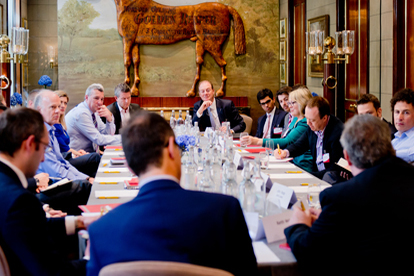Expert: Carol Storey, Roberta Barr Facilitator: Niall Buggy
Headlines:
- ESG investing is not good v bad – its directional and can take time
- Directionally sustainably – not dividing market into ‘good’ and ‘bad’. Always balance of net good and net bad
- The case of responsible management versus divestment is not discussed enough: this is a nuanced debate and not fully understood yet
Context:
Try to be as stakeholder friendly and sustainable as possible.
Escalation policy includes increasing frequency and depth of conversations with management of company or perhaps escalating to non-executives / company chairs, voting at AGMs, collaborating with other asset managers and owners, working with thought leaders and NGOs, or even going public with your opinion (in rare cases).
It is different in the US, and is easier to do this in UK and Europe.
Value funds which do not have sustainability restrictions can be an entry point for influencing, but size of investment matters.
Divesting is also an option if company does not change/follow policies, although need to consider seriously if this will lead to the real-world impacts you are working towards.
It can be challenging with smaller companies and take into account the disclosure burden and length of time.
Real-world case studies were used to demonstrate the types of decisions investors are faced with.
Firms can balance corporate and customer needs, as discussed in this European supermarket case study:
- Management choices in a high inflation scenario: (a) raise prices and maintain profits, (b) limit price rise to cover cost only (no profit) or (c) keep prices and accept loss
- How to balance the responsibility to shareholders in (a) with the responsibility to society as shown in (b) and (c)
- Engaging with supermarkets can help them drive change – sometimes without impacting their business model, e.g., they can take steps to prolong the shelf life of food
- Supermarkets can also work across their supply chains to improve supplier and customer outcomes, staff pay, packaging, sugar content, and taking a balanced approach to farmers
Sometimes investors need to differentiate between direction and ambition: Mining company case study:
- Mining company’s shareholder vote to support its not 1.5C-aligned mining Just Transition plans: (a) support unconditionally, (b) support under circumstance as they are doing their best or (c) don’t support unless 1.5C aligned
- Need to acknowledge the transition and work with management, who later implemented a Scope 3 goal (wider value chain)
- The impact of implementing a too strict approach too early on high emitting parts of its business (e.g. closing down sites abruptly) could have detrimental impacts on local communities and wider society, with limited real world impacts on emissions
It can be difficult to implement net zero policy – some companies simply divest. Preference is to support company attempts to decarbonize these challenging parts of its business (which will take time) or a responsible phase-out / wind down (e.g. if parts of its business are no longer viable).
The advice to companies with thermal coal investments depends on regional context, and the outcomes they are trying to achieve, and there may be wider societal and governmental implications that need to be worked out.
Focus on the decision makers in supply chains as in this Automobile manufacturer case study:
- Where should ESG investors focus their time: (a) raw material producers, (b) auto part manufacturers, or (c) auto makers?
- Automakers influence decisions across the entire supply chain
- Automakers also have a huge ability to influence what their customers want
- Raw material companies are limited where and how they produce, however mining giants have power to influence
Key takeaways:
- How to be a true ESG leader? ESG leader is a bold statement but starting to become a throwaway statement
- Schroders have invested heavily in ESG, with a team of 50 across research, active ownership, and data
- Being able to put a dollar value on positive and negative social impacts
- It’s not simply about being AAA, but about a research-based process


